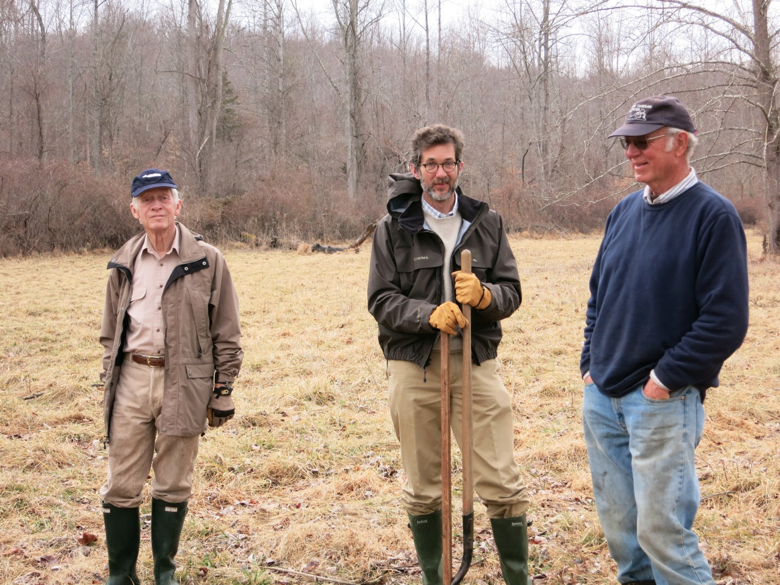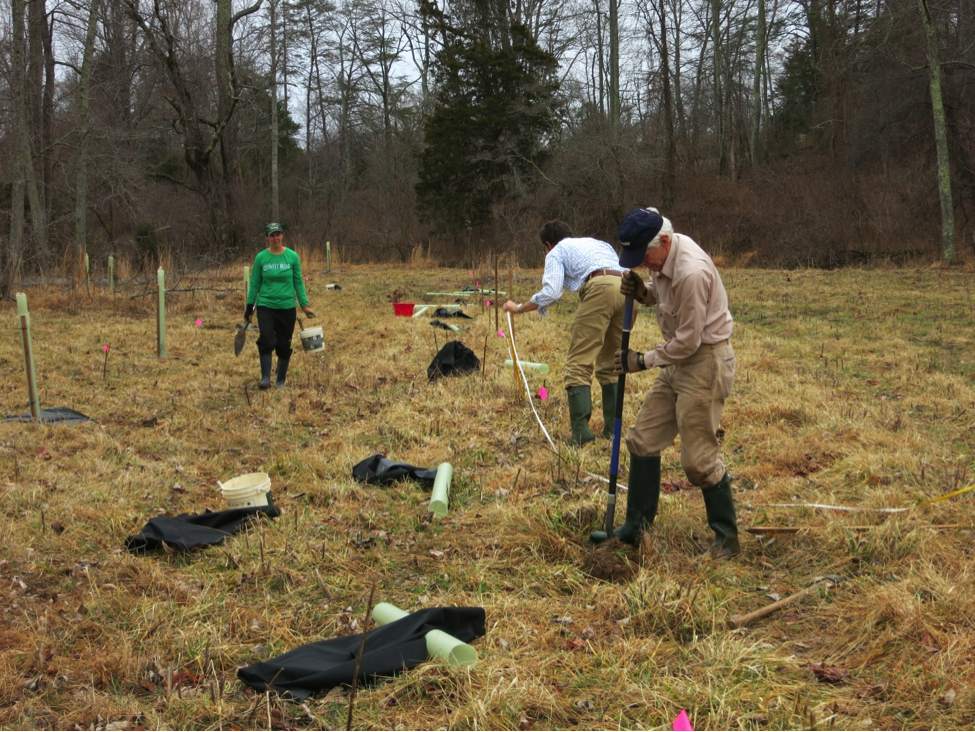Groups Partner to Install Riparian Buffer in Amherst County
Volunteers Needed to Help with Plantings on Future Dates
Annapolis, MD & Amherst County, VA – The Chesapeake Conservancy and the Robert E. Lee Soil and Water Conservation District (Robert E. Lee SWCD) have partnered to install a riparian buffer on private lands in Amherst County as part of the Amherst Tree Buffer Program (ATBP).
Through this partnership, nearly 2 acres and 1,800 linear feet of riparian buffer habitat will be planted on a property owned by Olan and Jay Mills. After years of serving as pasture for cows, this area will now be restored to the hardwood forest it once was, improving water quality and wildlife habitat along two small creeks that ultimately drain into the James River.

On March 14 and 15, 2015, the landowners, the Chesapeake Conservancy, the Robert E. Lee SWCD, and a student from the University of Richmond helped plant 100 white oak and persimmon trees. Over 400 more trees will be planted at the site in April, and volunteers are needed.
The ATBP was established to provide landowners in Amherst County with technical and financial support in the installation of riparian buffers on private lands. The program is designed to assist landowners who are either ineligible for agricultural cost-share programs or prefer an alternative way to conserve their land. The Chesapeake Conservancy is proud to support this innovative program and further conservation efforts within the James River watershed.
The Chesapeake Conservancy has provided both planning and funding support for this program. Next year, the Chesapeake Conservancy’s Conservation Innovation Center’s high-resolution 1-meter land cover data will be used to assist the district in identifying areas where buffer installation is most needed and where it will be most effective.
“Installing riparian buffers will improve runoff filtration and sediment deposition and improve drinking water quality,” said Anne Marie Clarke who coordinates the ATBP. “We are excited to continue to put trees in the ground as part of this grassroots program.”
“Through extensive community outreach, we heard that those living along the James River want to see improved wildlife habitat and water quality.” Joel Dunn, executive director, Chesapeake Conservancy, said. “The Amherst Tree Buffer Program is helping landowners address this need, while restoring the views along the Captain John Smith National Historic Trail. This is a great example of how the Chesapeake Conservancy aims to work with local partners and use ‘precision conservation’ to achieve goals set forth by the community.”

Many advantages are associated with the installation of these buffers, including the improvement of overall water quality, providing strips/corridors of natural vegetation for wildlife, and improving the habitat of many fish and other aquatic species. The ATBP is primarily funded through grants and is administered and managed solely by the Robert E. Lee SWCD. Monitoring efforts take place annually to ensure the integrity and functions of the buffers are upheld.
This project is a part of Envision the James, an initiative led by the Chesapeake Conservancy, the James River Association, and National Geographic Maps. Through this program, the groups work with local partners and communities to conserve important landscapes in the James River basin, improve wildlife habitat, restore river banks, protect important viewsheds, and promote the heritage, history, and use of the river.
For more information or to volunteer for future plantings, contact the Robert E Lee SWCD’s Amherst Watershed Coordinator: Anne Marie Clarke at: [email protected] or visit www.releeconservation.com. To learn more about Envision the James and how you can get involved, visit www.envisionthejames.org.